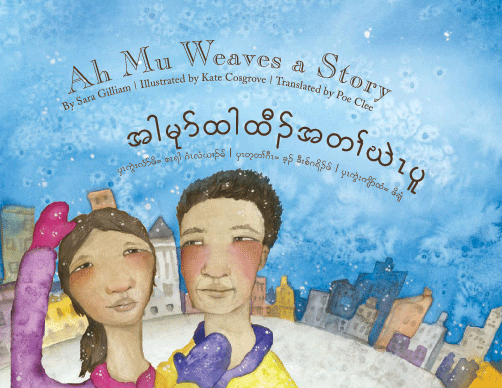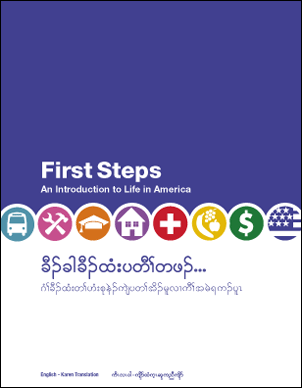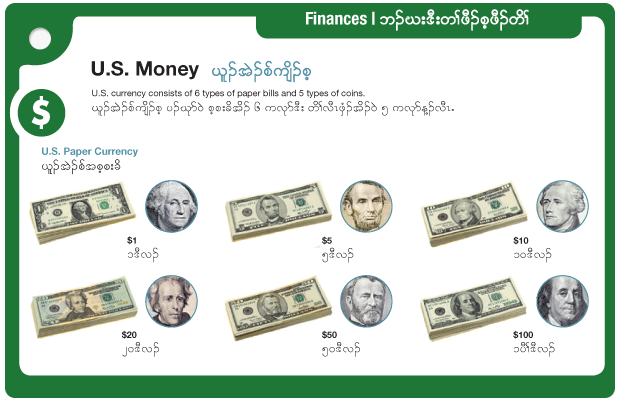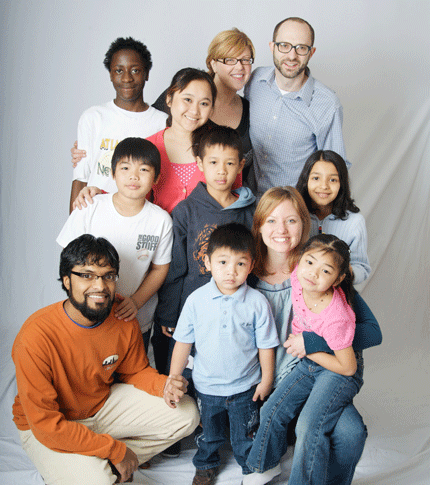Joyce Epolito
For us, it’s been all about relationship and listening. This year, a group of friends and I had the opportunity to inject design into the context in which we lived. It all started when we met several Burmese (Karen) refugee families in our neighborhood in Chicago (Rogers Park), one of the most diverse neighborhoods in the country. In the beginning we spent time with their children in a community group doing children’s ESL and art while the parents were also taking ESL classes at a local church. As time went on, we were invited into their homes and developed relationships with the whole families. We were very quickly thrust into the day-to-struggles these families were facing as new arrivals to the U.S.

Many of these families had been waiting in the refugee camp for over 17 years. Folks who had been living in tropical conditions in bamboo huts with dirt floors, no running water or electricity and surviving on food rations were transplanted into freezing cold city life in Chicago. While they had all faced unfathomable challenges and were undoubtedly survivors who were excited about new possibilities, they were now up against a bustling urban landscape; complete with public transportation, a massive public school district, safety concerns, and a difficult economy. Add to that their extremely limited English proficiency and many of these families were floundering without a road-map to navigate their new journey. As a group of friends we were affected by this, both relationally and professionally. Relationally we were challenged to hospitality. We collectively agreed that as Americans we had invited them here, and yet we were doing very little to welcome them or help them navigate their way. When we left a friend’s home, we more than once found ourselves writing reminders down in basic English and drawing pictures to communicate. We searched out resources and were unable to find well-designed comprehensive printed materials in their language. Professionally-speaking, we were designers and educators, and all instinctual trouble-shooters/problem-solvers. As the breadth of the problem(s) grew before our eyes, we began to brainstorm ways utilize our skills to help our refugee friends. We were two graphic designers, an educator and a student of cross-cultural studies. We were hard-wired to respond to this stuff.

We decided as a group to pool our energies and do something to welcome our new neighbors. We decided to apply for a grant to design a set of orientation materials, with the goal of responding to the limited resources in the Karen language. We were a group of friends without a 501(c)(3), so we found a non-profit to partner that had a similar mission to ours – “To welcome the stranger”. Exodus World Service focuses on mobilizing volunteers to be in ongoing relationships with refugee families. Together we applied for the Sappi Ideas that Matter grant and in July of 2008 were notified that we had been awarded $25,000. We started work on our idea right away. We had developed several assumptions based on seeing our newly arrived friend’s struggles first-hand and decided we needed to back it with some research. We partnered with another local graphic designer who was interested and experienced in design-anthropology and conducted a formal anthropological study. We crafted surveys and interviewed as many refugees, caseworkers, friends of refugees, and resettlement experts as we could get out hands on. We compiled the data and identified key areas where there was a deficit of visually-based native language information: Employment, Nutrition, Health and Safety, American culture, Transportation, Housing, Education, and Finances. We also learned through hearing the stories that a friendly voice of encouragement, trust and inspiration was desired from the refugees we talked to and so we used those as our guiding principles. Knowing that our audience was primarily not proficient in English and also quite often challenged with reading their own language (Karen), we knew we had to approach the information in a very visual manner with extremely simple language.

We began to rally a corps of volunteers and donors to fuel the project. Researchers, designers, writers, photographers, editors, models, an author, an illustrator, a translator and many cultural advisers — without them, this project wouldn’t have happened. Together, we created the First Steps Kit: two informational books and a story book. One book is a tactile set of introductory reference cards bound by a removable ring. Another is an in-depth visually-based textbook going into further detail on the same areas. The third is a narrative storybook (Ah Mu Weaves a Story) that tells the tale of a family adjusting to life in the U.S. Each of the books presents the information in a very different way, yet all are very visual and presented along side simple language. The books are bilingual and can be used in an ESL teaching setting. They contain 100’s of photos, many of our refugee friends from the community. The books were also designed to stimulate conversation between an English-speaker and a Karen-speaker, as each of the ring-bound cards has an English question running along the bottom. Based on our commitment to relationship, we’ve recommended that the kit be used with an English-speaking volunteer, although they can also be handed off and left behind with new arrivals if need be. One year after it’s inception the first translation is complete and books have made it into the hands of over 500 Karen Households across the U.S. While the name of our venture is Chicago Welcomes You, the information we created for the First Steps Kit is not Chicago-specific. We moved to a national distribution when we realized the serious demand for the materials. We’ve watched our refugee friends experience the materials first hand. The feedback, response and interest from them and the national community of refugees, volunteers and resettlement agencies has been strong and vibrant. There is undoubtedly a need in the system for more materials like these. We are now personally/relationally involved with many families from many different countries in our neighborhood and are extremely interested in creating other translations and other projects that would serve the specific needs of various groups both locally and nationally. It seems we’ve discovered a market although as of yet, we’ve found little funding that exists within this market.

We are seeking out funding sources to do more translations of the First Steps books and potentially another iteration of the storybook highlighting a different group. The current cost of the kit is very low ($20), as all of the printing and material costs were covered by the grant. We are extremely interested in doing this work long-term and finding ways to include university students in the experience. We are currently working towards establishing a non-profit publishing house that would continue to research and innovate designing materials to serve newly arriving refugees. Rogers Park is also home to Loyola University Chicago, where I teach design and will be teaching an Experiential Learning Graphic Design class in Fall 2010 that will integrate design and anthropology within the context of refugee resettlement.
To find out more about our project and to order your copy of the First Steps Kit go to: www.chicagowelcomesyou.org Ah Mu Weaves a Story, By: Sara Gilliam | Illustrated By: Kate Cosgrove | Translated by: Poe Clee. To learn more and to order your copy: http://ahmuweavesastory.blogspot.com/
Joyce Epolito is a design graduate of the University of Illinois at Chicago and Central Michigan University.











October 13, 2009 at 3:02 am
This project is a great idea to reach out to struggling refugees unfamiliar with our area. I think it was important to include factual based books as well as a story about the family, for having a story they can relate to and understand easily is a relief from trying to memorize pictures and unfamiliar letters/numbers. Donations and volunteers can really help this kit become even bigger and better. For diverse communities such as Rogers Park in Chicago, maybe if this reaches enough of the various people living in them, they will not only understand/learn about our culture, but also each other’s cultures as well.
October 12, 2009 at 2:44 am
America is always about helping those of other countries in need. But it always seems that we are helping them in their countries, but what about when they need help in ours. There are people who complain about those living here who can’t speak English, well this kind of project is a way to help them learn. When we help someone, we have to go all the way otherwise there is no point. This project can help displaced refugees all over the world by giving them the chance to learn about the language and culture of the place they are going to be living in for awhile. Being a refugee is hard, this is just one way we can make their lives easier.
October 9, 2009 at 4:44 pm
i agree, this is such an amazing resource, and was created with such care. it’s a beautiful body of work. good job team.
October 8, 2009 at 8:12 pm
What a wonderful resource for so many communities around the the country. There are beautiful, well written and well designed. I know it will change the world!